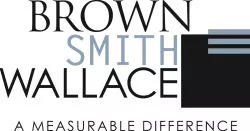The IRS issued Notice 2015-87 late last year to provide guidance on how various provisions of the Affordable Care Act (ACA) apply to employer-sponsored health plans. The guidance, which includes 26 questions and answers, is generally applicable to plan years beginning on or after December 16, 2015, though it can be relied on for earlier periods. Let's look at some highlights.
Employer contributions
When required employee contributions to buy employer-sponsored coverage aren't "affordable," as defined under the ACA, employees are potentially eligible for premium tax credits and applicable large employers (ALEs) may face liability under the "play or pay" provision. The guidance explains how employer contributions affect employees' required contributions for the purposes of the affordability requirement.
Generally, employer contributions reduce employees' required contributions as long as they can be used only for medical expenses (including coverage under an employer-sponsored health plan). They can't reduce the required employee contributions if they can be received as taxable benefits or used to buy non-health benefits. (However, the guidance includes a special rule for employers subject to certain federal prevailing wage laws.)
Transitional relief allows employers to treat certain employer contributions not satisfying the general principle as reducing an employee's required contribution for purposes of the play-or-pay provision for plan years beginning before 2017 if requirements set forth in Notice 2015-87 are met.
Unconditional opt-out payments
Future proposed regulations are expected to address unconditional opt-out payments. These are available to employees declining employer-provided coverage if not conditioned on satisfaction of other requirements (such as proof of coverage from a spouse's employer).
The guidance stipulates that unconditional opt-out payments will likely be treated as increasing employees' required contributions for employer-sponsored coverage. The IRS generally anticipates that this rule will apply only after final regulations are issued, except that it will apply on adoption to unconditional opt-out arrangements adopted after December 16, 2015.
Until the rule applies, employers aren't required to treat opt-out payments as increasing employees' required contributions for purposes of reporting or complying with the play-or-pay provision. Because employers using the transitional relief may report on IRS Form 1095-C a lower required employee contribution than applies for determining eligibility for premium tax credits, employees enrolled in coverage via a Health Insurance Marketplace may be found ineligible for advance payment of premium tax credits even though their household income is within the eligibility range.
Thus, Notice 2015-87 encourages employers using the transitional relief to notify employees that they can obtain pertinent information about their required contributions using the employer contact telephone number on Form 1095-C.
Adjustments to affordability standard
Under the ACA, "affordability" is determined by whether the coverage offered costs an employee more than 9.5% of his or her annual household income. But there have been some adjustments to this standard.
In 2015, the IRS began indexing the percentage of household income that employees may be required to pay for employer-sponsored coverage when determining affordability under the play-or-pay provision. The guidance indicates that indexing applies to all provisions under the ACA that reference the 9.5% standard — including the three affordability safe harbors of the play-or-pay provision. The IRS intends to amend the associated regulations but, in the interim, employers may rely on the indexed percentages (9.56% for 2015 and 9.66% for 2016).
Penalty amounts and relief
Notice 2015-87 confirms the indexed penalty amounts for ALEs under the play-or-pay provision. For 2015 and 2016, here are the penalty amounts:
$2,080 and $2,160, respectively, for failure to offer minimum essential coverage to at least 95% of all full-time employees. This penalty is per full-time employee in excess of 30 full-time employees.
$3,120 and $3,240, respectively, for offering coverage that isn't deemed affordable or doesn't provide at least minimum value to at least one full-time employee. The penalty is per full-time employee receiving a premium tax credit. However, the penalty is also calculated under the method for failure to offer minimum essential coverage. If the calculation under that method results in a lower penalty, the employer pays that lower amount.
Adjustments for future years will be posted on the IRS.gov website.
Regarding penalty relief, the guidance states that, for returns filed or statements furnished to employees in 2016 (relating to 2015 coverage), penalties for incorrect or incomplete returns or statements won't be imposed on ALEs that can demonstrate good-faith efforts to comply with the reporting requirements. This relief isn't available to ALEs that fail to timely file (or furnish a statement) or cannot show a good-faith effort to comply. But the regular IRS rules allowing penalty relief upon a showing of reasonable cause may apply. Similar relief applies to coverage reporting.
Definition of "hour of service"
Notice 2015-87 explains how the "hour of service" rules under the Department of Labor's regulations apply when determining full-time status under the play-or-pay provision.
For example, an hour of service doesn't include hours after termination of employment or hours paid solely to comply with a workers' compensation law. But short- or long-term disability leaves generally result in credited hours of service for periods during which the recipient retains employee status and receives disability benefits directly or indirectly funded by the employer.
Notably, the guidance states that disability benefits from coverage bought with after-tax employee dollars won't give rise to hours of service. Moreover, the Department of Labor's 501-hour limit on crediting paid, nonworked hours doesn't apply under the play-or-pay provision. The IRS intends to propose these clarifications as regulations under the play-or-pay provision, effective as of December 16, 2015.
Notes on HRAs
According to Notice 2015-87, Health Reimbursement Arrangements (HRAs) and other employer payment plans generally can't be used to buy individual health insurance policies, with narrow exceptions. The guidance affirms that retiree-only HRAs can be used to buy individual coverage — even if the HRA balances include amounts credited when the account holders were current employees covered by integrated HRAs.
Similarly, Notice 2015-87 affirms that HRAs and other employer payment plans can satisfy the ACA's mandates if they limit the purchase or reimbursement of individual coverage to policies that provide only excepted benefits (for example, dental coverage). But HRAs other than retiree-only plans will fail to be integrated — and, thus, fail to comply with the ACA — if they can be used to buy individual coverage that isn't limited to excepted benefits. This is the case even if, in practice:
- Employees use the HRAs only to buy policies that provide only excepted benefits, and
- The HRA provides that the individual policy purchases are authorized only when the account holder has other group coverage or after the other group coverage is lost.
The guidance confirms that, if a cafeteria plan reimburses the cost of individual coverage (whether through salary reductions, flex credits or other employer contributions), the arrangement is an employer payment plan. Therefore, it can't be integrated with the individual coverage and will fail to comply with the ACA unless the plan limits reimbursements to coverage that provides only excepted benefits.
Last, Notice 2015-87 indicates that, if an HRA can reimburse family members' expenses, they, too, must be covered by the employer's other group health plan for their HRA benefit to be considered integrated. A transitional rule waives the coverage requirement for family members for plan years beginning before 2017 if requirements set forth in the guidance are met. The IRS doesn't mention integration with the group health plan of another employer, which presumably remains available to satisfy the integration requirement for HRAs that reimburse family members' expenses.
Health FSA carryovers
Qualifying Health Flexible Spending Accounts (FSAs) need not offer COBRA coverage unless the qualified beneficiary's account is "underspent" when a COBRA-qualifying event occurs. In other words, the amount available for reimbursement for the remainder of the plan year must exceed the COBRA premiums for that period. The guidance explains that Health FSA carryovers are included when determining the amount available for reimbursement.
In contrast, Notice 2015-87 also states that carryovers aren't included when determining the COBRA premium, which is based solely on the employee's salary reduction election and any additional employer contributions. The guidance provides that, even though qualifying Health FSAs aren't obligated to provide COBRA beyond the end of the plan year, if a Health FSA allows carryovers for non-COBRA beneficiaries, it must allow them on the same terms for similarly situated COBRA beneficiaries.
Thus, at the end of the plan year, a qualified beneficiary could potentially carry over up to $500 of unused amounts until the end of the applicable COBRA maximum coverage period, with no premium due. But Health FSAs may limit carryovers to individuals who have elected to participate in the Health FSA in the next plan year and may require that carryover amounts be forfeited if not used within a specified period of time, such as one year.
Review the guidance
As you can see, Notice 2015-87 goes into great detail about many aspects of the ACA. It's particularly important for any employer that's currently subject to the play-or-pay provision — or that could be in the future — to review the guidance with its health care benefits advisor.
The content of this article is intended to provide a general guide to the subject matter. Specialist advice should be sought about your specific circumstances.

